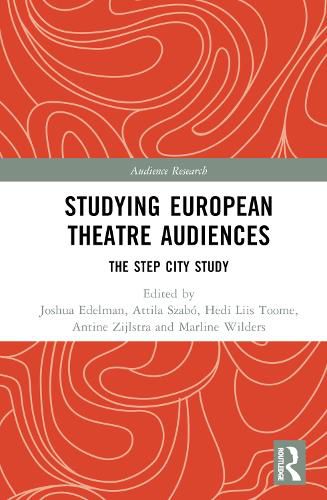Readings Newsletter
Become a Readings Member to make your shopping experience even easier.
Sign in or sign up for free!
You’re not far away from qualifying for FREE standard shipping within Australia
You’ve qualified for FREE standard shipping within Australia
The cart is loading…






This book reports on one of the largest co-ordinated efforts to survey the theatrical audience experience: the City Study of the Project on European Theatre Systems, which conducted over 7000 surveys and dozens of interviews and focus groups with audience members from four mid-sized cities across Europe.
This study aimed to capture the details of how audiences perceive and value theatre, and resulted in a data set which, while imperfect, has no precedent in scale and comparability for theatre studies. Based on this very large data set, the authors were able to create a portrait of varied segments of European theatrical audiences, its experiences, and how it values theatre, that is more detailed and incisive than any previously available. The question is not just who comes to theatre, but why, and how those experiences are valuable to them. This book's key contribution, however, is methodological that offers a detailed and unsparing examination of the City Study's working methods: their underlying theory, their strengths and weaknesses, and which survey and interview techniques were more successful in bringing out useful information.
This makes this book essential reading for those interested in studying theatre's place in society, but also for artists, policy makers, and arts professionals who want to make and share work with an understanding of their audience's engagement with it.
$9.00 standard shipping within Australia
FREE standard shipping within Australia for orders over $100.00
Express & International shipping calculated at checkout
This book reports on one of the largest co-ordinated efforts to survey the theatrical audience experience: the City Study of the Project on European Theatre Systems, which conducted over 7000 surveys and dozens of interviews and focus groups with audience members from four mid-sized cities across Europe.
This study aimed to capture the details of how audiences perceive and value theatre, and resulted in a data set which, while imperfect, has no precedent in scale and comparability for theatre studies. Based on this very large data set, the authors were able to create a portrait of varied segments of European theatrical audiences, its experiences, and how it values theatre, that is more detailed and incisive than any previously available. The question is not just who comes to theatre, but why, and how those experiences are valuable to them. This book's key contribution, however, is methodological that offers a detailed and unsparing examination of the City Study's working methods: their underlying theory, their strengths and weaknesses, and which survey and interview techniques were more successful in bringing out useful information.
This makes this book essential reading for those interested in studying theatre's place in society, but also for artists, policy makers, and arts professionals who want to make and share work with an understanding of their audience's engagement with it.